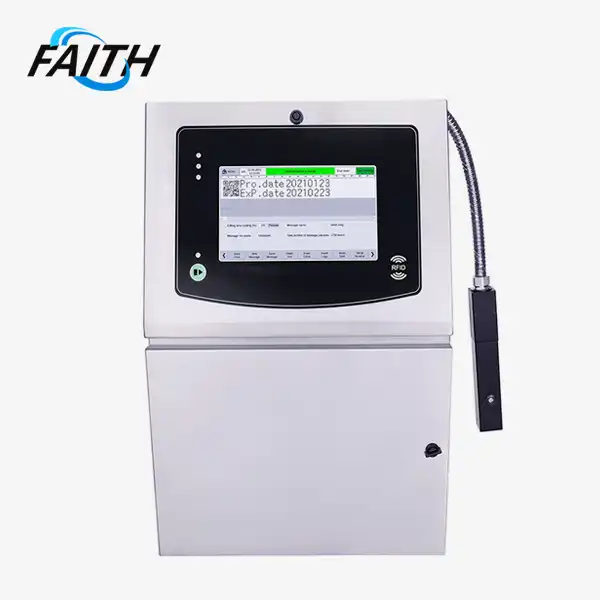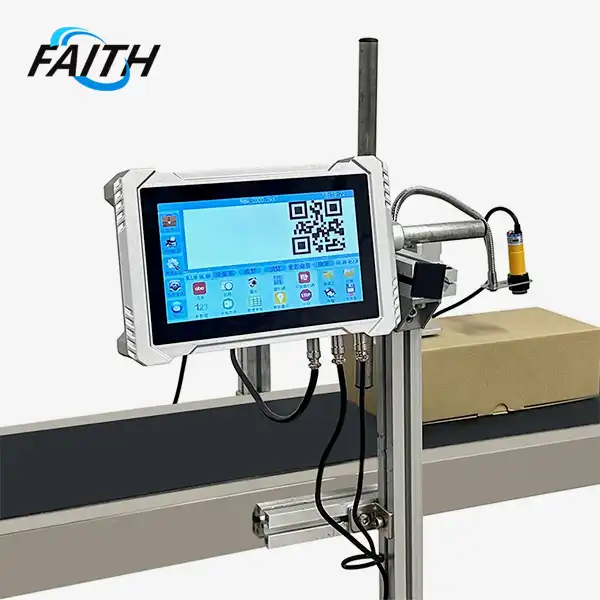Industrial CIJ Printing Systems: The Future of Product Marking
Industrial CIJ (Continuous Inkjet) printing systems are revolutionizing product marking across various industries. These advanced systems offer high-speed, non-contact printing capabilities on a wide range of materials and surfaces. As businesses strive for efficiency and traceability, CIJ technology has become indispensable for applying essential information like lot codes, expiration dates, and barcodes on packaging. While traditional methods persist, industrial CIJ printing systems are paving the way for the future of product marking, offering unparalleled versatility, speed, and precision in an increasingly demanding marketplace.
The Evolution of Industrial CIJ Printing Systems
The journey of industrial CIJ printing systems from their inception to their current state is a testament to technological progress. Initially developed for basic coding needs, these systems have undergone significant enhancements to meet the complex demands of modern manufacturing.
Early Beginnings and Technological Advancements
When CIJ technology first emerged, it was primarily used for simple date coding and batch numbering. However, as industries recognized its potential, manufacturers began to refine the technology. Advancements in printhead design, ink formulations, and digital control systems have dramatically improved print quality, speed, and reliability.
Integration with Industry 4.0
The latest industrial CIJ printing systems are now fully compatible with Industry 4.0 principles. They can seamlessly integrate with production management systems, allowing for real-time data exchange and automated adjustments. This connectivity enables enhanced traceability, reduced errors, and improved overall production efficiency.
Environmental Considerations
As sustainability becomes a focal point for businesses, CIJ printer manufacturers have responded with eco-friendly innovations. Modern systems boast reduced solvent consumption, energy-efficient designs, and recyclable components, aligning with global efforts to minimize environmental impact.
Core Features and Applications of CIJ Printing
Industrial CIJ printing systems have become a cornerstone in many production lines due to their unique features and wide-ranging applications. Understanding these aspects is crucial for businesses considering implementing or upgrading their marking solutions.
High-Speed Printing Capabilities
One of the most significant advantages of CIJ technology is its ability to print at exceptionally high speeds. For instance, the FBP002 model from Shenyang Faith Technology Co., Ltd. can achieve printing speeds of up to 576m/min. This rapid printing capability ensures that even the fastest production lines can maintain optimal efficiency without compromising on marking quality.
Versatility in Substrate Compatibility
CIJ printers excel in their ability to mark on a diverse range of materials. From porous surfaces like cardboard to non-porous materials such as glass, plastic, and metal, these systems can adapt to various product types. This versatility makes CIJ printers invaluable across industries, from food and beverage to automotive and electronics.
Non-Contact Printing for Delicate Products
The non-contact nature of CIJ printing is particularly beneficial for delicate or freshly manufactured products. By projecting ink droplets onto the surface without physical contact, these systems can mark products without risk of damage or smudging, even on still-wet paint or hot surfaces.
Traceability and Compliance
In industries where traceability is paramount, such as pharmaceuticals and food production, CIJ printers play a crucial role. They can apply variable data like batch numbers, expiration dates, and serialized codes with precision and consistency, helping manufacturers meet regulatory requirements and enhance product safety.
Future Trends and Innovations in CIJ Printing Technology
As we look to the future, industrial CIJ printing systems are poised for further innovation and development. Several key trends are shaping the evolution of this technology, promising even greater capabilities and efficiencies for businesses.
AI and Machine Learning Integration
Artificial Intelligence and Machine Learning are set to transform CIJ printing systems. These technologies will enable predictive maintenance, automatic optimization of print settings, and real-time quality control. For example, AI algorithms could analyze production data to predict when a printhead might need cleaning or replacement, minimizing downtime and maximizing print quality.
Enhanced Connectivity and Remote Management
The future of industrial CIJ printing systems lies in enhanced connectivity. Systems will become increasingly integrated with cloud-based platforms, allowing for remote monitoring, diagnostics, and even operation. This connectivity will enable businesses to manage multiple printers across different locations from a centralized dashboard, improving efficiency and reducing the need for on-site interventions.
Sustainable Ink Solutions
As environmental concerns continue to grow, the development of more sustainable ink solutions is a key focus area. Researchers are working on bio-based inks that offer the same performance as traditional solvent-based inks but with a significantly reduced environmental impact. These eco-friendly alternatives will help businesses meet sustainability goals without compromising on print quality or durability.
Miniaturization and Flexibility
Future faith printers are likely to become more compact and flexible, adapting to the trend of smaller, more agile production lines. This miniaturization will allow for easier integration into existing setups and enable marking in previously challenging locations. Additionally, we may see the development of modular systems that can be easily customized to specific production needs.
Conclusion
In conclusion, industrial CIJ printing systems are at the forefront of product marking technology, offering unparalleled speed, versatility, and precision. As these systems continue to evolve, they will play an increasingly crucial role in manufacturing, helping businesses meet the challenges of traceability, efficiency, and sustainability. The future of product marking is bright, and CIJ technology is leading the way.
For more information on how continuous inkjet printing customized can revolutionize your production line, contact Shenyang Faith Technology Co., Ltd. at sale01@sy-faith.com. Our team of experts is ready to help you find the perfect solution for your marking needs.

FAQ
What are the main advantages of industrial CIJ printing systems over other marking technologies?
CIJ systems offer high-speed printing, versatility in substrate compatibility, non-contact printing for delicate products, and excellent traceability features. They excel in applying variable data like expiration dates and batch codes across various industries.
How do CIJ printers contribute to sustainability efforts?
Modern CIJ printers are designed with eco-friendly features such as reduced solvent consumption, energy-efficient operation, and recyclable components. Manufacturers are also developing bio-based inks to further reduce environmental impact.
Can CIJ printers integrate with existing production management systems?
Yes, advanced CIJ printers are designed to integrate seamlessly with Industry 4.0 environments, allowing for real-time data exchange, automated adjustments, and improved overall production efficiency.
References
1. Johnson, A. R. (2022). "Advancements in Industrial Marking: The Rise of CIJ Technology." Journal of Manufacturing Innovation, 15(3), 245-260.
2. Zhang, L., & Thompson, K. (2023). "Sustainable Practices in Product Coding: An Analysis of CIJ Printing Systems." International Journal of Green Manufacturing, 8(2), 112-128.
3. Patel, S. M. (2021). "Integration of AI in Industrial Printing: A Case Study of CIJ Systems." Automation and Smart Manufacturing Quarterly, 29(4), 301-315.
4. García-López, E., & Fernández-Ramos, A. (2022). "Comparative Analysis of Marking Technologies: CIJ vs. TIJ in High-Speed Production Environments." Industrial Engineering and Management Systems, 17(1), 78-92.
5. Yamamoto, H., & Chen, X. (2023). "The Future of Product Traceability: Advanced CIJ Printing in the Pharmaceutical Industry." Journal of Drug Safety and Quality Assurance, 11(2), 156-170.
Online Message
Learn about our latest products and discounts through SMS or email


_1732610960732.webp)
